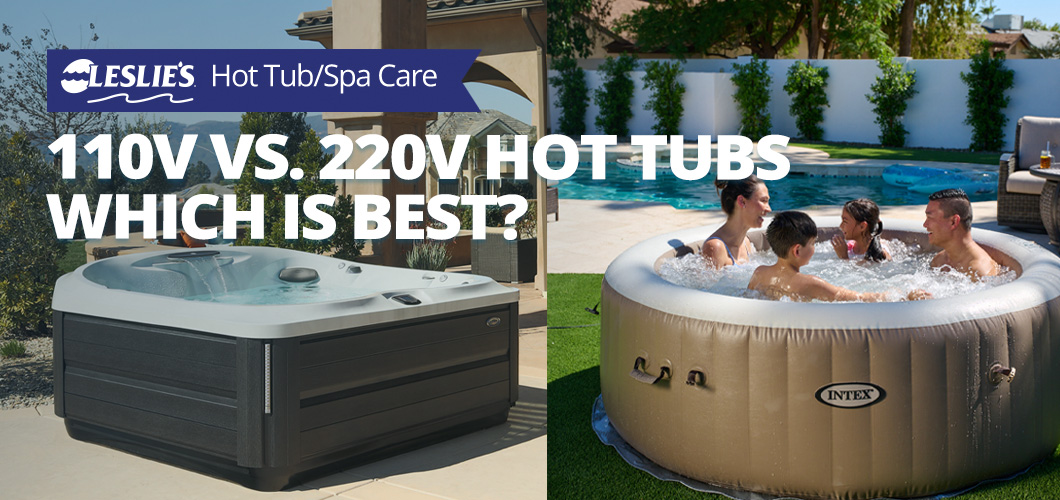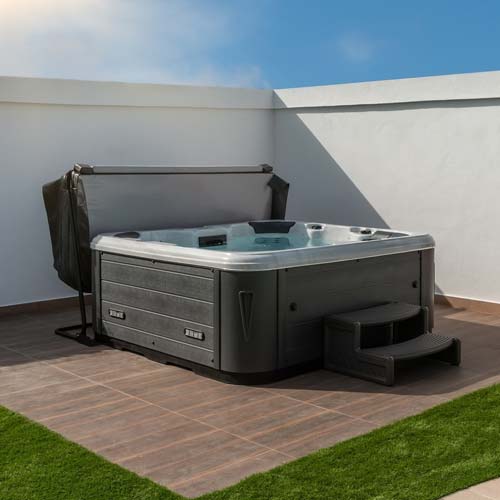
110V vs. 220V Hot Tubs - Which is Best?
When shopping for a hot tub, you face dozens of decisions, and one of the largest purchase decisions is whether to buy a 110V hot tub or a 220V hot tub. 110V (115V or 120V) hot tubs are often called "Plug and Play", because most can be plugged into a standard 15 amp electrical outlet. 220V (230V or 240V) tubs are hard-wired from the home main circuit breaker box, to a safety cut-off box located near the hot tub, and then directly into the spa control box.
110V hot tubs and 220V hot tubs both have their own pros and cons - what's right for you?
110V Hot Tub Advantages
Lower cost:
The lower cost of 'Plug & Play' hot tubs has created opportunities for spa builders and for people who want to pay less for a hot tub. They are cheaper because they are smaller, with fewer spa jets, less powerful pumps and heaters, and overall fewer 'bells and whistles'.
Easy installation:
Place on a suitable location that can support the weight of the tub when full, fill it full of water and plug it in. What can be easier than that? 110V hot tubs can be plugged into most outlets, however depending on the model, you may need to unplug other electrical loads on the circuit, or plug into a 20 amp outlet.
More portable:
Because 110V hot tubs are smaller and less full-featured, they often weigh less than 220V hot tubs. This is especially true for inflatable and rotomolded hot tubs, however some plug and play models can weigh 500 lbs, when empty.
220V Hot Tub Advantages

Larger tubs:
If you want a larger tub that 5 or 6 people can enjoy at the same time, look at a 220V hot tub. A larger body of water, with a larger filter is easier to keep clean than a smaller hot tub. Smaller tubs (under 300 gals), can sometimes overflow when 2 or 3 people climb in the tub.
Larger heater:
220 volts can power larger electric elements, 4kW or 5.5kW. 110V heaters usually max out at just 1.0kW, which can take a long time to heat, or reheat the spa, and lose heat quickly when the cover is off. For poorly insulated spas, a 1kW heater may not be able to stay hot in very cold weather.
Larger pumps:
Although 110V spa pumps have plenty of 'oomph, they have to split it between fewer jets, and many cannot operate the jet pump and the spa heater at the same time. 220V spas can have 4 or 5 horsepower pumps, and can power pumps, heater, lights, stereo and more, all at the same time.
Convertible 110V/220V Hot Tubs
You can buy 110V only and 220V only, or you can buy convertible voltage hot tubs, which will accept either voltage. When connected to 110V, convertible spas heater elements will switch to 1.0 Kw, and make other sacrifices to split up the available power accordingly, such as pumping at low speed only, while the heater is operating.
Cost to Wire a Hot Tub with 220V
The cost to wire a 220V hot tub will vary, but depends mainly on how close the hot tub is to the house main breaker box panel. Barriers, terrain changes or other complications could raise the price. Another budget killer is a home whose breaker box panel is completely filled, without room (available amperage) to add another 50 amp breaker. In most cases however, wiring a hot tub with 220V usually costs about $500, although the price can easily double with distance or other difficulties.
What's Best — 110V or 220V Hot Tubs?
If you have the budget available, 220V hot tubs are the best choice, in my opinion. However, if you want only a small hot tub for 1 or 2 people, and your climate is mild during the winter, and the cost to buy and wire a 220V hot tub is prohibitive - a 110V hot tub may be the best choice.
As stated above, Plug & Play hot tubs do have certain advantages, and they offer all the benefits of higher priced hot tubs, at a lower price point. Many manufacturers position their 110V spas as an 'entry-level' hot tub, with the hopes that their 220V models will fit the bill for an eventual upgrade. Sort of like an auto dealer that sells both Chevrolet and Cadillac.